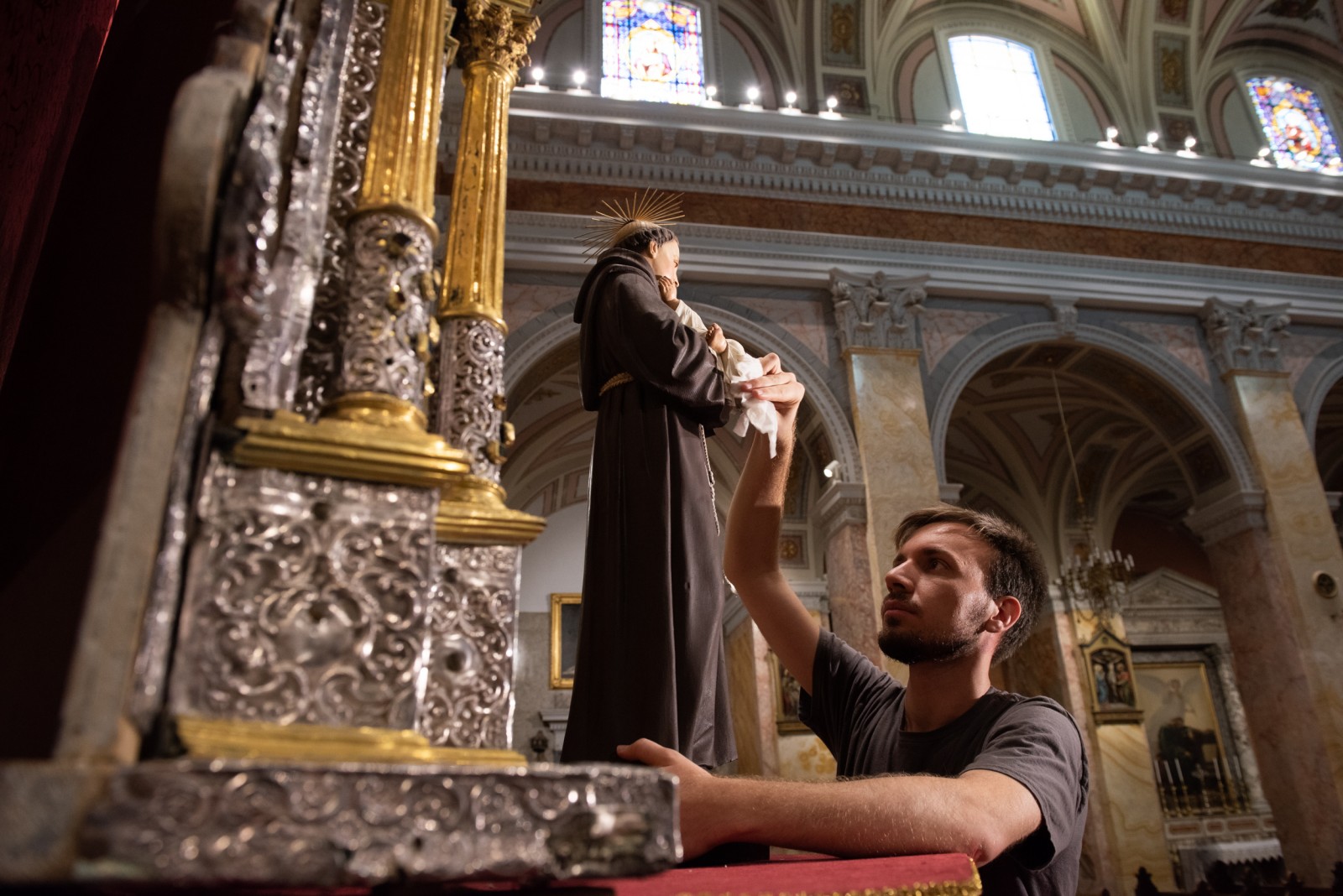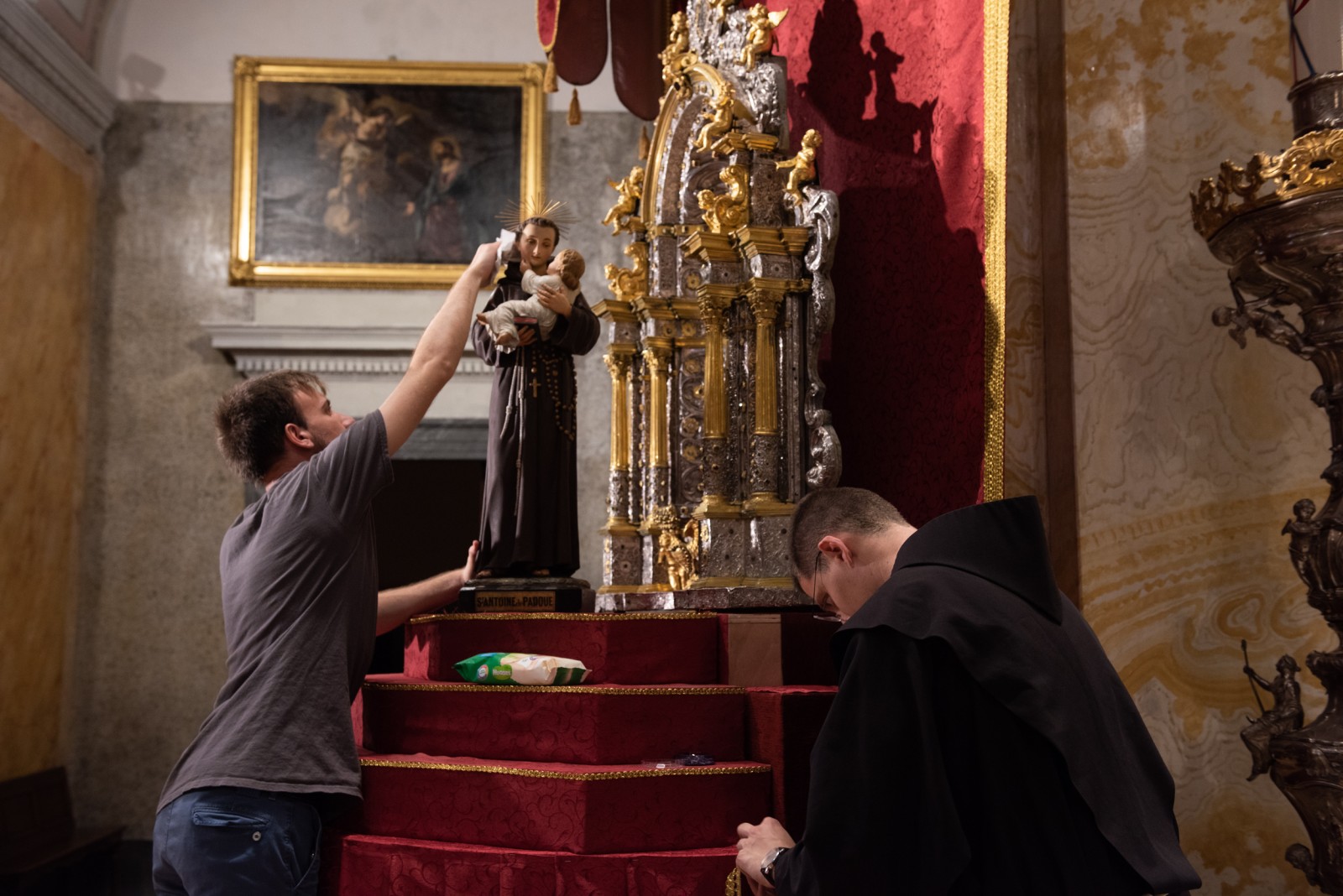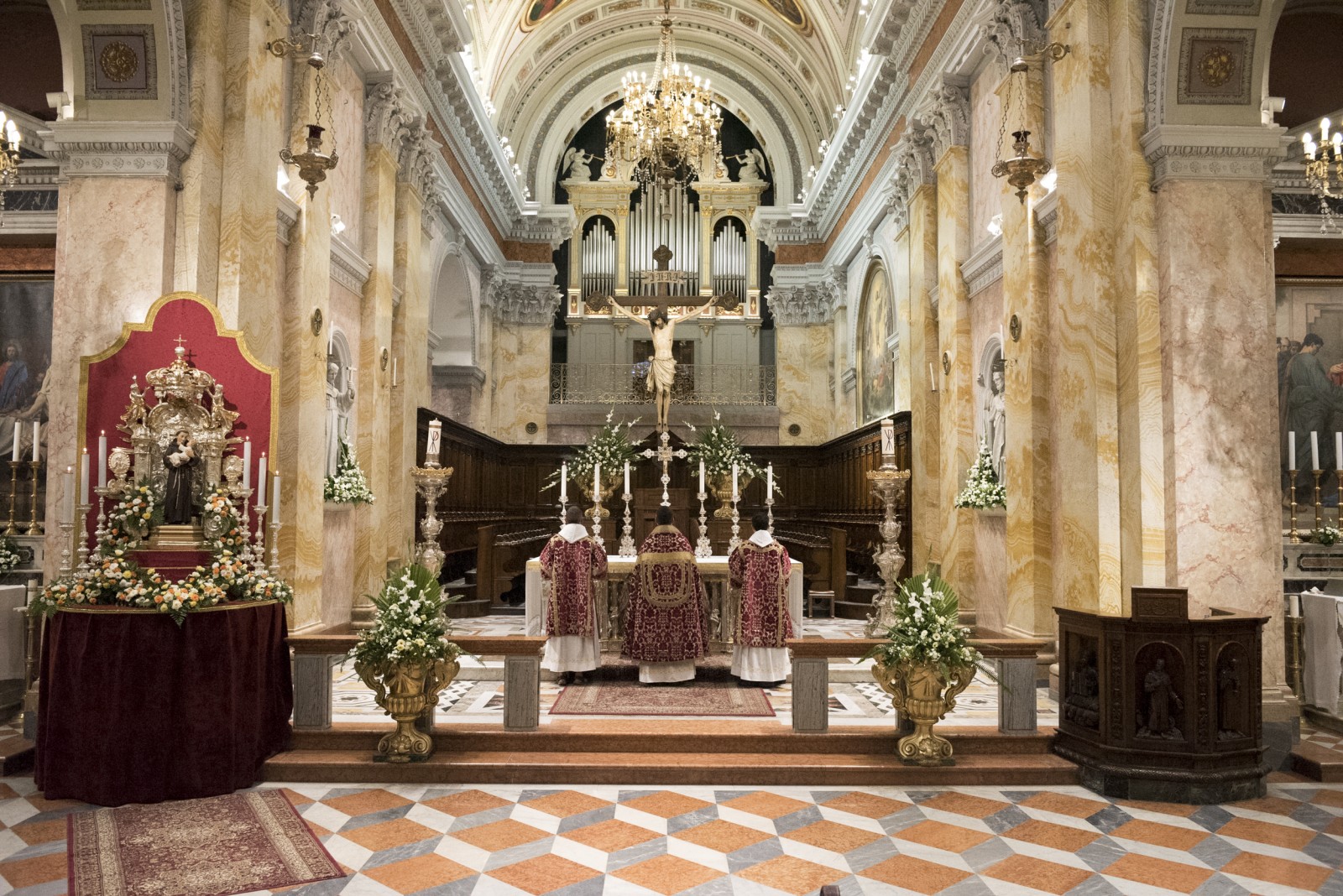Sandals, Beauty and Liturgy: the search for beauty in the sacristy of the Saint Saviour Monastery
In the tranquility of Saint Saviour, the days preceding every large and small liturgical feast are filled with a silent but intense activity. Among the reflections of the stained glass windows and the brilliance of marble, before the ecstasy of stone saints and in the shadows of the great crucifix that stands austere in the center of the apse, we hear the rapid rustling and the ringing of rosaries hanging from the robes of friars who, in silence, create beauty with their quick and expert hands. It is the friars of the sacristy of the Saint Saviour Monastery who continue to obey the command given by Christ, “Go and prepare my Easter,” that Easter of the Lord which is manifested in all the feasts of the liturgical year, including those of saints.
Then, at the sound of the prayer bell, the friars set aside their wires, scissors, fabrics and flowers. No activity has a good result if it is not born from and does not return to prayer. Prayer and work and study. The Benedictine motto ora et labora applies to friars of all races and backgrounds. Immediately after, the work resumes amid smiling and joking, and can continue late into the night.
These hard-working friars are not only embellishers of the churches, they are above all creators of beauty. Saint Francis does not speak of God as Beautiful, but defines him as Beauty, that is, the epitome of beauty and its substance. Whoever shows the beauty of the Father is His son, he who is the imprint of His substance. “The Word became…visible beauty and placed His tent in our midst”. Every human act of creation of beauty executed in sincere faith is not only sharing in God’s creative activity but is also a visible and sensitive expression of His intimate substance which is beauty. In other words, whoever creates beauty helps us to contemplate the One who is Beauty.


It is with these feelings that I approached the activity of the friars in the sacristy. I was able to lend my hands, time and heart in preparing for not only the feast of Easter, but also for the feasts of saints as well as ordinations and professions. It was undoubtedly one of the most beautiful experiences of my time at the monastery.
Shirt and habit at the service of the only Beauty. The Custody of the Holy Land is custodian of not just stones, which is carried out with alacrity and diligence, but also of the Light that the stones have seen and continue to transmit. This is achieved by guiding and caring for the faith with ever-changing liturgies, because the faith is always alive and new. It resonates with ancient rituals, solemn melodies and well-tended gestures that shine with the splendors of past centuries and speak to modern times with the same noble simplicity as ever. Yes, because we are not only custodians of the beauty of the past, but also searchers of the same beauty in today’s world.
Treasures such as vestments, chalices, candlesticks and silver that kings and nobles as well as the poorest faithful have donated to the Custody as a sign of their faith and devotion continue to be used for the liturgy today. The faith is kept alive in that chiseled silver. Nowadays, the friars are still called upon to produce masterpieces using materials much simpler but no less dignified and beautiful. This is the mission of Francis which he imposed on his brothers: “I pray to you more than if it were about me […] the chalices, the corporals, the ornaments of the altar and all that serves the sacrifice, must be precious.” [1] This mission continues today in the busy silence of the Saint Saviour Monastery. The skillful hands of friars who come from all over the world including Brazil, Syria, Italy, and Croatia collaborate in translating the Gospel into art and in giving God the glory He deserves.
The most intense moment is not at the end of the work, stopping to admire what has been done with a smug air, but rather the sound of the bell that starts the Liturgy: there, everything takes on a sense of proportion and measure during the act of lovingly worshipping God who is Himself love. The flowers, the music, the vestments, the scent of incense, the pastoral of the 18th century under the modern led lights, poor sandals on precious marble, all in perfect balance between our poverty and His greatness.

The blessing is given. The liturgy is over. We’re going back to the sacristy. The curtain falls over the altar and opens again to life. Everything that has been prepared must be dismantled: the feast is over. But then…what was all that for? An unloving heart would say that it was pointless, the hours of working late into the night, the wasted fabrics, the dried flowers, the ancient silverware useless in modern times. The loving heart answers: it was not enough what we did, the next time we will improve, we will do better, no matter how long it takes. A loving heart seeks nothing else, wants nothing else, expects nothing more than to give the best to the Person who loves us the most, only the best, because His love is omnipresent.
The lights of the Saint Saviour church go out. It is already 1:30 in the morning. Rosaries tinkle lightly in the shadows of the monastery corridors and sandals tread lightly on the stone floors so as to not wake up the other friars. Love is kind and considerate. “What time are the prayers tomorrow?” “The usual, 6:15.” “Okay, see you tomorrow!” “Good night!” “Night!” This is how a day in the sacristy of Saint Saviour ends. At 6 o’clock in the morning, they will already be in the choir, and at the sound of the bell they will fall to their tired knees. Weary but with happy hearts, they will begin the day giving meaning to their fatigue chanting: “Adoramus te sanctissime Domine Jesu Christe.”
Why all this? Why this waste of life and matter?
For love.
Only for love.
Only for Love.
—————————
[1] 1Lcus: FF 240-244.



